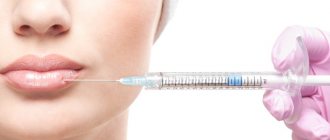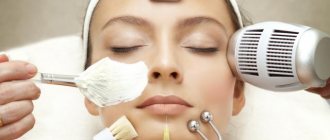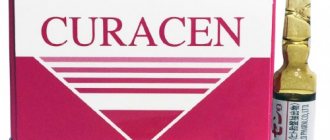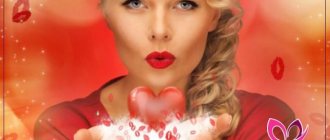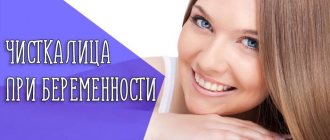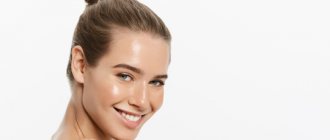What is mesotherapy
The procedure consists of intradermal administration of medicinal and vitamin preparations in low doses. This is a minimally invasive injection technique that allows you to eliminate many aesthetic problems of the face, body, and hair. After it, the skin is transformed, the skin becomes tightened and elastic.
Mesotherapy is carried out as a separate manipulation or part of cosmetic procedures. The drugs are administered with the thinnest needles to a depth of 1.5-13 mm, this depends on the area of work. At the age of 18 to 25 years, facial mesotherapy is more often performed to get rid of oily skin, acne and its consequences. After 25, it acts as a prevention of aging.
An improvement in skin condition is noted after the first session, but a course of treatment is required to solve aesthetic problems. The number of visits is selected individually. From 4 to 15 procedures may be required at intervals of 6-10 days. To get rid of cellulite, up to 15 sessions are required, to restore the oval of the face - up to 8, to eliminate bags under the eyes - up to 4.
Mesotherapy against rosacea
Today there are several forms of mesotherapy. The point of this procedure is to introduce specially selected drugs into the deep layers of the skin. This can be done using:
- a regular syringe with a thin needle;
- air pistol;
- fractional laser;
- hardware methods;
- dermaroller.
Which of the listed methods will work better in your particular case is decided by a specialist. But each of them has its own characteristics that are worth knowing about.
Manual
This type of mesotherapy is preferable in the treatment of rosacea on the face. The doctor clearly sees and takes into account the location of the vessels, pinning the drug in such a way as to avoid additional damage as much as possible. If the session is carried out by a qualified specialist with extensive experience, then there are practically no bruises, which many women are so afraid of.
The advantage of this method is its high selectivity. Some areas are chipped more densely, others less frequently. The downside is that the procedure lasts longer than pistol or laser mesotherapy, and the injections are felt more strongly. But to get a good effect, you can be patient a little.
Pistol
The air gun helps to process even large spaces very quickly. The most unpleasant part of the procedure takes only a few minutes. The device allows you to set the depth of delivery of the drug, and it is introduced into each puncture in a strictly defined volume. This ensures uniform treatment of the entire affected surface.
But this is also the main disadvantage of pistol mesotherapy. Working in this mode, it is impossible to achieve the selectivity that is present with the manual method. Some small vessels are damaged and bruises form. Although they are harmless, your face will not look very attractive for several days.
Factional
The most expensive, but also the most effective method of treating rosacea. The laser beam, broken into thousands of small beams, penetrates the skin to the desired depth, while simultaneously cauterizing the blood vessels. The drug, penetrating through microholes, relieves inflammation and has a powerful healing effect.
Fractional mesotherapy allows you to cure even severely advanced rosacea in a few sessions. Or at least noticeably reduce its manifestation. If you compare photos taken before and after such therapy, the results are very impressive.
Hardware
This is a non-injection technique that does not damage the upper layer of the epidermis. Drugs overcome the hydrolipidic barrier under the influence of ultrasound or ionization. The procedure is almost ideal for moderate rosacea. It does not irritate the skin, there is no rehabilitation period at all, but at the same time it quite effectively strengthens and narrows the capillaries.
If you buy a portable device and high-quality preparations, you can just as easily do it yourself at home. The only negative is that you will need at least 10-15 sessions, performed every other day. And sometimes several such courses at intervals of 1-2 months to achieve long-term and significant results.
What is the difference between mesotherapy and biorevitalization
The methods are very similar, but differ in the composition of the agents and the method of administration. For biorevitalization, gel-like preparations based on hyaluronic acid are used. Due to their dense consistency, they fill obvious wrinkles well, so the procedure is recommended for people over 30 years old.
During mesotherapy, liquid cocktails that contain various substances are administered. The cosmetologist selects the composition taking into account skin problems, age, and wishes of the client. They may also contain hyaluronic acid , but its amount will be significantly less than for biorevitalization. Due to the liquid form of the drugs, it will not be possible to fill deep wrinkles and folds. Due to the multicomponent composition, the range of indications for mesotherapy is wider.
Mesotherapy and biorevitalization can be used as two complementary procedures. They help improve skin condition, but have a different spectrum of action.
Pros and cons of mesotherapy
The main advantage is the safety and non-toxicity of the drugs used, which extremely rarely cause side effects. Other advantages:
- wide age range;
- combined with other cosmetic procedures;
- minimal list of contraindications;
- persistent, long-lasting effect;
- suitable not only for women, but also for men;
- performed on an outpatient basis.
One of the disadvantages is the need for several sessions - from 4 or more, which depends on the problem being solved. After injections, slight swelling and discomfort at the injection site are possible, but this should not be a cause for concern.
What therapeutic effect does mesotherapy have?
The result is noted due to 2 factors: delivery of active components to the skin and the mechanical effect of the needle. At the injection site, many microtraumas appear, which trigger the production of their own elastin and collagen, as a result of which microcirculation and metabolic processes improve. Depending on the task and the composition of the cocktails, the following effects are noted:
- the elasticity and firmness of the skin increases;
- hair growth increases;
- the functioning of the sebaceous glands is normalized;
- Spider veins are eliminated and blood vessels are strengthened;
- dark circles and bags under the eyes disappear;
- The oval of the face is tightened, fine wrinkles and sagging skin are eliminated;
- pigment spots are eliminated;
- enlarged pores are narrowed, acne and its consequences are eliminated.
The cosmetic procedure smoothes out the “orange peel” and evens out the skin. It is effective in the presence of stretch marks, scars, scars due to stimulation of tissue regeneration.
Treatment methods for rosacea as an underlying disease
Phototherapy
- Photodynamic therapy (PDT)
is one of the new therapeutic technologies for the treatment of various forms of acne, including rosacea [9]. - Photopneumotherapy
is a type of PDT and also has a good therapeutic effect in the vascular stage of rosacea: after the first session, the severity of hyperemia and vascular pattern decreases [10]. However, in 23% of cases, so-called photosensitive forms of rosacea occur, when the manifestation of rosacea is observed at the first rays of the spring sun; such patients are not recommended to use phototherapeutic techniques.
Cosmetology procedures
Masks, some injection methods, etc. are aimed at improving the condition of the superficial vessels of the skin, microcurrent therapy is aimed at providing lymphatic drainage.
Diathermocoagulation
Unlike acne, where the opening of inflamed and non-inflamed sebaceous cysts leads to a rapid therapeutic effect and clinical remission, with rosacea, as a rule, there are no cystic cavitary elements, the papule is dense. We use diathermocoagulation for rosacea only in relation to individual telangiectasias after the removal of acute inflammatory phenomena and reduction of swelling and diffuse hyperemia of the facial skin.
Changes in the sebaceous glands, their enlargement with the formation of sebaceous cysts are characteristic of acne (acne vulgaris). The vascular and initial stages of papular rosacea occur without involvement of the sebaceous gland. In a later period, with long-term, protracted complicated forms of rosacea, the sebaceous gland becomes activated with the formation of cysts. Apparently, due to chronic inflammation, local stimulation of androgen receptors in the skin occurs. In these cases, diathermocoagulation of cystic elements is quite effective.
Local preparations
Gel Skinoren 15%
. For topical treatment of rosacea, there is a smaller range of topical medications available than for the treatment of acne. The direction of action of drugs for rosacea: vasoconstrictor, anti-inflammatory, antibacterial, anti-demodex. In recent years, Skinoren gel with 15% azelaic acid has been successfully used for rosacea. The effectiveness of Skinoren for rosacea reaches 90%. Some doctors and patients are concerned about a slight burning sensation, irritation or minor aggravation of the skin when starting treatment with Skinoren, and they discontinue this drug. Indeed, these side effects may occur if the drug is prescribed too early. In these cases, we usually interrupt the use of Skinoren for 2-3 weeks and continue treating rosacea with classical methods. Then Skinoren gel 15% is re-prescribed for 2-3 months until clinical remission occurs. The previously described adverse reactions do not recur.
Sulfur-containing gel Delex-acne
. The sulfur-containing gel Delex-acne has been shown to have good therapeutic effectiveness for acne and rosacea. The active principle of the gel - activated sulfur in combination with anti-inflammatory plant extracts (nettle, calendula) - prevents the increase in greasiness, has antibacterial, anti-inflammatory and anti-demodectic effects [11].
Roaccutane
Recently, there has been a tendency to expand the indications for the systemic use of isotretinoin (Roaccutane) in the treatment of rosacea. This drug is an effective treatment for severe forms of rosacea. Despite drier and more sensitive skin, patients with rosacea tolerate Roaccutane well. Side effects in the form of dryness and irritation when using it are no more pronounced than in patients with acne. True, you cannot do without specific skin care while taking Roaccutane, which reduces external side effects to zero.
It is important to note that the appointment of Roaccutane should be planned already at the first visit of a patient with acne or rosacea, if there are appropriate indications, for example, for patients with long-term severe widespread forms of rash (cystic and atheromatous), who, as a rule, have already been treated with antibiotics, but with a temporary effect. We believe that physician concerns about drug toxicity do not justify delaying its use in these patients. Comparing the effect of roaccutane and antibiotics on the body, we can say that the severity of the side effects of antibiotics is no less, if not more, than that of roaccutane. Retinoids have been described to act on the etiological factor of rosacea, vascular endothelial growth factor (VEGF), by reducing its activity [12]. Considering the suppressive effect of retinoids on VEGF, it is advisable to conduct broader studies of the therapeutic effect of roaccutane on the vascular stage of rosacea.
Mesotherapy
Mesotherapy must be carried out taking into account the visceral cutaneous zones of reflex projection, since in the acute and subacute state of this disease, injections into the facial skin are too aggressive.
Basic naturopathic therapy
The use of naturopathic therapy in combination with classical methods or alone (for mild disorders) can be very beneficial for any dermatological patient, including those with rosacea. The main stages of basic naturopathic therapy are detoxification, stabilization, and recovery. Additionally, specially individually selected treatment methods are prescribed, for example, correction of the psycho-emotional state with homeopathic medications, reflexology, hirudotherapy, etc. [8].
Hirudotherapy
In our practice, the use of this method has proven to be very effective not only in the acute and subacute stages of rosacea, but also during the rehabilitation period. Hirudotherapy sessions were carried out once a week, a course of 5–10 procedures. The number of leeches used per session was small (4–7 pieces). The procedures were well tolerated in all patients. The reduction in redness on the face was noticeable from the first procedure. Well-being and sleep improved, and patients became calmer. The maximum clinical effect on the face was achieved after 6–7 procedures. The effect of hirudotherapy is complex and consists of several factors: reflex, mechanical and biological [13].
This method allows you to eliminate venous congestion and increase blood supply. In addition, substances that have analgesic and anti-inflammatory effects enter the bloodstream. For example, the enzyme hirudin, secreted by a leech, helps reduce blood viscosity. As a result, blood microcirculation improves and facial swelling decreases. Another leech enzyme, hyaluronidase, depolymerizes hyaluronic acid molecules, “dissolving” the intercellular cement. Third, collagenase actively breaks down pathological collagen, which at the clinical level is manifested in regression of hypertrophic scars and softening of fibrotic connective tissue.
Homeopathy
Endocrinologists often do not find significant endocrine pathology in patients with rosacea that requires hormone replacement therapy. Classical homeopathy as a regulatory therapy is especially effective for endocrine pathologies. Homeopathic medicines for the treatment of the gastrointestinal tract help gastroenterologists obtain an earlier and more lasting effect from treatment. And, of course, the role of homeopathic remedies in regulating the psycho-emotional status, which is so important for rosacea, is invaluable.
Modern homeopathy and antihomotoxic drugs are an effective direction in medicine. Homeopathic complexes allow doctors of all specialties to use them in their practice. Detoxification therapy with these drugs allows you to achieve faster
Areas of application of mesotherapy
The procedure can be used to eliminate aesthetic problems on any part of the body. Mesotherapy application areas:
- Body.
- Face.
- Hair and scalp.
- Eyes (eyelids, area around the eyes, bags and dark circles under the eyes).
- Stomach.
- Neck.
- Chin.
- Hips, buttocks.
- Chest (neckline area).
- Hands.
- Legs.
- Back.
- Nose and nasolabial folds.
- Lips.
- Vessels.
The low invasiveness of the procedure allows it to be used even on areas with thin and sensitive skin. It can be combined with other therapeutic and surgical techniques within the framework of aesthetic medicine.
Mesotherapy shows high effectiveness for baldness. According to reviews of people who have undergone the procedure, after 10-13 sessions, activation of the hair follicles is noted.
Mesotherapy
Mesotherapy is a method of administering medications intradermally in very low doses, both locoregionally and at a distance from the affected area, in order to obtain a therapeutic effect due to the action of the injected medications and the effect of stimulating biologically active points and reflexogenic zones of the skin.
Depending on the molecular weight, the diffusion of administered drugs from the dermis into the blood and lymphatic beds occurs at different rates. The higher the molecular weight of a substance, the longer it is retained (deposited) in the skin.
Features of the pharmacokinetics of drugs when administered intradermally, multifactorial effects when using mesotherapy techniques determine all the advantages of this technique:
- mesotherapy drugs are administered in significantly lower doses compared to, say, traditional intramuscular injections. Due to this, we significantly reduce the toxic load on the body and avoid the consequences of the iatrogenic effect of drugs;
- injections are carried out much less frequently: minimum intervals are 7-14 days, with maintenance therapy - once every 1-6 months. In general, the basic principle is this: the next procedure begins only when the previous one has finished.
- technical simplicity of mesotherapy injections, especially using hardware techniques;
- the low traumatic nature of the technique and low invasiveness, the absence of a long rehabilitation period make it possible to combine mesotherapy with other therapeutic and surgical techniques (including within the framework of aesthetic medicine).
Therefore, according to the definition of Ignacio Ortiz, “mesotherapy is a method of administering drugs intradermally in low doses, both locoregionally and at a distance from the affected organ, in order to obtain a pharmacological effect (due to the action of the administered medications), as well as through stimulation (due to effect of injections), which leads to positive results in numerous nosological conditions.” This definition most fully reveals the reasons for the sustained popularity of mesotherapy among a number of practitioners.
Areas of application of mesotherapy in dermatology and cosmetology.
- Cellulite
- Excess body fat
- Prevention and treatment of skin aging, mesolifting
- Atrophic, hypertrophic and keloid scars
- Cuperosis, rosacea, telangiectasia
- Oily, porous skin Seborrhea, neurodermatitis, eczema, scleroderma, vitiligo, hyperpigmentation
- Acne beyond the acute stage
- Alopecia, hair loss and diseases
- Preparation and rehabilitation after surgery, chemical and mechanical peeling, laser skin resurfacing
Injection technique for mesotherapy
- mesopuncture (epidermal injection),
- mesoinjections (injection depth is calculated individually),
- mesoinfiltration,
- mesoperfusion.
In dermatology and aesthetic medicine, when carrying out mesotherapy, such technical techniques as nappage, the technique of individual injections (papule technique), linear (tracing technique) and its modifications are widely used, for example, in the correction of wrinkles. Manual methods of administration allow for an individualized approach, make it possible to work even in the most delicate areas with very thin skin, allow you to use medications more economically and do not require large additional costs. In mesotherapy, as indeed everywhere else, “manual” work is more valuable. Mesotherapy is a special method of medical practice that allows for prevention and rational pharmacotherapy of various pathological conditions. The special place and popularity of mesotherapy in aesthetic medicine is due to the possibility of a pathogenetic approach to solving various cosmetic problems, the possibility of delivering drugs not just to the target organ, but directly to the target tissue. Not only the local and regional effects of drugs, but also their systemic effects, coupled with the positive effects of the injections themselves, should provide a pronounced and lasting result.
There are contraindications. A preliminary consultation with a doctor is required .
Indications and contraindications for mesotherapy
Mesotherapy is performed as a therapeutic and preventive procedure from the age of 18. This is a universal and effective manipulation that has a wide range of indications:
- rosacea;
- acne (acne vulgaris, rosacea);
- stretch marks;
- scars;
- bags, circles under the eyes;
- sagging, decreased skin tone;
- dark spots;
- wrinkles;
- swelling;
- oily, porous skin;
- cellulite;
- alopecia (hair loss).
Injections can serve as a preparatory step before other cosmetic procedures or during the recovery period after them. The procedure has a number of limitations:
- pathology of the coagulation system;
- intolerance to substances contained in the drug;
- pregnancy;
- tendency to form keloid scars;
- breast-feeding;
- period of exacerbation of chronic diseases;
- severe inflammatory process, fungal infection, open wounds in the work area.
Injection mesotherapy is not recommended when taking antiplatelet agents or anticoagulants due to their effect on the blood coagulation system. Time restrictions: menstruation, recent deep peeling, respiratory diseases.
Contraindications
Properly performed mesotherapy for rosacea is useful and gives excellent results. But we must not forget that there are quite numerous contraindications to it.
The procedure is not done if:
- pregnancy and lactation;
- elevated body temperature;
- exacerbation of chronic diseases;
- purulent pimples, severely inflamed acne;
- oncological and autoimmune diseases;
- epilepsy, serious mental disorders;
- hypertension and diabetes mellitus 2-3 degrees;
- infectious and fungal skin diseases;
- neuralgia of the facial nerves.
It is undesirable to carry out the procedure during menstruation, as well as when the immune system is severely weakened for any reason. At least a week before it is necessary to stop taking anticoagulants and limit the consumption of alcohol and coffee.
Mesotherapy techniques and methods
Methods differ in the method of administering drugs to the treated area:
- Pinpoint (“prick by prick”) is a classic, easy-to-perform technique. The drug is administered with a needle at a right angle to a depth of 4 mm at a distance of 1.5-2 cm.
- Nappage (“coating”) – quick injections at an angle to the surface of the skin. The needle is inserted to a depth of 1 to 4 mm, which depends on the type of nappage: superficial, middle or deep. The distance between injections is 3 mm.
- Papular. The needle is inserted at an angle to a depth of 1-2 mm to form small papules (tubercles).
- Linear. More often practiced for the treatment of scars and stretch marks. The needle is directed tangentially, the drug is injected retrogradely to fill the dermis under the wrinkle, fold of skin.
- Infiltration. It is used primarily to get rid of excess fat deposits (orange peel treatment). The needle is inserted to a depth of up to 13 mm every 2-2.5 cm.
In therapeutic mesotherapy, the continuous infusion technique is used to relieve pain in arthritis and arthrosis.
Facial mesotherapy
The structure of the skin in different parts of the face is different, which is why the approach to the technique and goals of mesotherapy changes. Thus, in the chin area it is often necessary to remove local fat deposits and tighten sagging skin, in the area of the nasolabial triangle they fight the consequences of gravitational ptosis, in areas of the cheeks vascular (rosacea, telangiectasias) and pigmentary disorders often develop, and on the forehead and around the eyes often facial wrinkles occur. All these features force the cosmetologist to use different types of drugs and administration techniques during facial mesotherapy.
To restore facial contours and eliminate a double chin, lipolytic substances are used. In preparation for this manipulation, take a 2 ml syringe. The skin is pre-treated with an antiseptic (chlorhexidine) and then a special gel or cream with an anesthetic is applied.
20-30 minutes after applying the anesthetic gel, the remaining drug is removed from the surface of the skin and, using a syringe with a 6 to 13 mm needle, the lipolytic cocktail is slowly injected into the fatty lobe of the chin. The depth and localization of injection is determined individually depending on the size of the skin fold and the accumulation of adipose tissue. (only needle depth from 6-13 mm depending on the fold) needs to be rewritten.
When mesotherapy of the nasolabial triangle and cheek area, anesthesia is used with the application of an occlusive dressing - a gel or solution is applied to the skin, after which the treatment area is covered for 15-20 minutes with an air-tight material (for example, ordinary plastic film). Depending on the type of drug and the goals of mesotherapy, the classic “prick by prick” technology, the papular technique, can be used to administer the drug effect; in the area of the nasolabial folds, various variants of the linear technique can be used. Typically, a G30.32 needle 4, 6 or 13 mm long is used for this purpose.
A fairly common method of administering the drug to various areas of the face is using superficial nappage technology. It is believed that in this way the effectiveness of acupuncture and reflexogenic effects on the skin increases. However, about half the volume of the drug remains on the surface of the skin. To ensure that it does not go to waste and also has a pharmacological effect, it is necessary to prepare the skin in a special way before the mesotherapy procedure. The essence of this preparation is to degrease the upper parts of the epidermis, clean the pores and increase skin permeability. Depending on the type of skin and a number of other factors, these procedures are implemented using various methods and approaches (scrub, peeling, cosmetic masks) at the discretion of the cosmetologist. After this, the medicinal solution remaining on the surface of the skin after nappage is also able to penetrate the epidermis and exert its effect there. That is why, after mesotherapy using this technology, you cannot wipe the skin with an antiseptic solution - you can use a cotton pad soaked in a sterile saline solution.
For nappage, thin needles 13 mm long are most often used; the drug is injected at an angle of 30 degrees. For convenience, some cosmetologists independently bend the needle to the appropriate angle - this way you can carry out mesotherapy while holding the syringe straight, which reduces the inconvenience for the doctor.
Also, to administer medications during facial mesotherapy, both small-papule techniques and injections along wrinkles and skin folds are used. In this matter, a huge number of factors can influence the choice of a cosmetologist’s method:
- Type of damage to the skin of the face and the nature of pathological changes;
- Characteristics and properties of medicinal cocktails;
- The effect desired by the patient from the procedure
Therefore, when choosing one or another method of administration, it is better to rely on the experience and practical knowledge of a cosmetologist.
Facial mesotherapy techniques can be roughly divided as follows: for fine wrinkles, prevention of skin aging, and to improve microcirculation, the superficial nappage technique is often used; for vascular disorders, minor skin defects, and age spots, the papular technique is considered more preferable. In the case of acne, oily or dry skin, rehabilitation, and smoker’s skin, the “prick by prick” technique is often prescribed. And linear techniques are used in the case of deep wrinkles and scars.
In general, technology issues for facial mesotherapy can vary within very wide limits. The reasons for this are a wide range of skin problems in this area and their causes, differences in the structure of the skin in different areas of the face, a large number of medications used, the full effect of which requires different approaches to their administration. The individual characteristics of the patient also add complexity to this issue.
Types of mesotherapy
There are two types of procedure: injection and non-injection. In the first case, active substances are delivered to the skin using ultra-thin needles manually or using hardware. “Manual” mesotherapy allows you to work in the most delicate areas with thin skin, the drug is used sparingly.
Automatic injectors (guns) are suitable for working on a large area of skin (buttocks, thighs, abdomen, etc.). They facilitate and speed up manipulation, helping to quickly work on a large area in a short period of time. The device provides the exact depth of needle insertion and volume of the drug.
The second type of mesotherapy is the introduction of meso-cocktails without the use of needles. The active ingredients penetrate the skin through laser irradiation, magnetic and electric waves, and oxygen treatment. The method is ideal for people who want to undergo a rejuvenating procedure, but are afraid of injections.
Mesotherapy procedure
Treatment of rosacea using mesotherapy sessions consists of injections into the affected areas of a special meso-cocktail based on drugs such as:
- routine;
- vitamins C, P;
- biloba;
- microelements;
- plant extracts.
Due to the targeted effect, the walls of blood vessels are strengthened, the elasticity of capillaries increases, the complexion is perfectly evened out, and skin irritation is reduced. The general condition of the skin improves significantly due to improved blood circulation, compactions disappear, and the vascular mesh becomes less noticeable.
The procedure itself takes place within 20-30 minutes. In this case, immediately before injections, for the purpose of disinfection and pain relief, the skin is treated first with an antiseptic and then with an anesthetic gel.
The depth and localization of injections is determined by a cosmetologist based on the severity of the vascular network and the condition of the skin (dryness, sagging, presence of seals).
Look at the photographs of patients who underwent mesotherapy - before and after the session:
Complications, side effects and consequences of mesotherapy
An allergic reaction to the administered substances is possible, which can manifest itself as severe swelling of the skin, itching, and hives. Other negative effects:
- Pain. When the drugs are administered, there is pain and sometimes a burning sensation, which is associated with irritation of skin receptors. If necessary, the cosmetologist administers local anesthesia using gels.
- Redness. Normal reaction to injection. The redness disappears within half an hour, maximum after 2-3 hours.
- Bruises. They occur due to damage to blood vessels during the injection. They dissolve from 2 days to 2 weeks depending on the area of the skin , the condition of the vascular wall, and the degree of fragility of the blood vessels.
Minor swelling is possible - the body’s natural response to skin injury; it goes away on its own within 1-2 days.
Preparations, remedies and medicines for mesotherapy
Taking into account the principle of action, mesotherapy drugs are divided into several groups: vitamin, vascular, lifting, anti-inflammatory, lipolytic. The composition may include:
- dimethylaminoethanol;
- lipolytics – liporcil, silicine, lopocat, phosphodithylcholine;
- vitamins – A, C, E, B;
- acids – glycolic, pyruvic, hyaluronic;
- plant extracts – aloe vera, green tea, guarana, artichoke;
- minerals – silicon, magnesium salts, zinc, selenium;
- antibiotics, anti-inflammatory drugs;
- extracts of animal origin - elastin, peptides, collagen, etc.
The specialist selects the composition of the cocktail individually, taking into account skin type, main problems, age and other factors.
Recommendations for patients
After the injections, the cosmetologist gives recommendations for the recovery period, which takes an average of 3-5 days:
- do not visit the sauna, bathhouse, solarium;
- do not sunbathe in the sun;
- do not perform peelings, massages and other procedures that involve mechanical impact on the skin;
- limit physical activity.
After the procedure, you should stop drinking alcoholic beverages, as they promote vasodilation. It is recommended to use sunscreen before going outside. In the first days, treat the skin with chlorhexidine and healing gels. Decorative cosmetics, especially foundation, should be discarded in the first 2 days so as not to irritate the skin and provoke inflammation.
It is not recommended to take blood thinning medications (aspirin, etc.) for 2 days after injections.
Where can you get mesotherapy in the Russian Federation?
Mesotherapy is one of the most popular procedures performed by cosmetologists in medical or cosmetology centers. When choosing a clinic, you need to pay attention to the availability of the necessary licenses to carry out this activity, as well as a diploma from a specialist.
Before mesotherapy, it is recommended to clarify which drug manufacturers the institution works with, view photos of the work, and a description of the procedure. The price of clinic services depends on the drugs used, the number of injections and the area of influence.
Mesotherapy is an effective cosmetic procedure. It solves a number of problems with skin and hair, while avoiding surgical intervention . The result can last up to 1.5 years; it is recommended to repeat the course once a year.
Composition of drugs
Properly selected drugs for mesotherapy for rosacea on the face play a very important role. It is better to buy them only from trusted manufacturers or entrust the choice to specialists. Some cocktails can have the completely opposite effect. For example, products with caffeine for dilated capillaries are strictly contraindicated.
Most effective drugs that really help quickly solve the problem and strengthen blood vessels contain a multivitamin complex as a base, which compensates the cells for the lack of nutrition. They may also include:
- hyaluronic acid;
- amino acids and peptides;
- oligoelements (zinc, potassium, magnesium, copper, etc.);
- plant extracts;
- collagen and/or elastin;
- medications;
- silver ions;
- high-tech complexes.
If you have other skin problems, your doctor may use two or three cocktails in rotation to achieve maximum results in the shortest possible time.
It is better to buy drugs yourself for home use in specialized stores or the official website of the manufacturer and its representatives. This is the only way to insure yourself against counterfeits, the use of which is unsafe for health.
It is also necessary to check the expiration date, the integrity of the packaging and strictly adhere to storage conditions. Most cocktails can be administered within a maximum of two to three hours after opening the ampoule.
